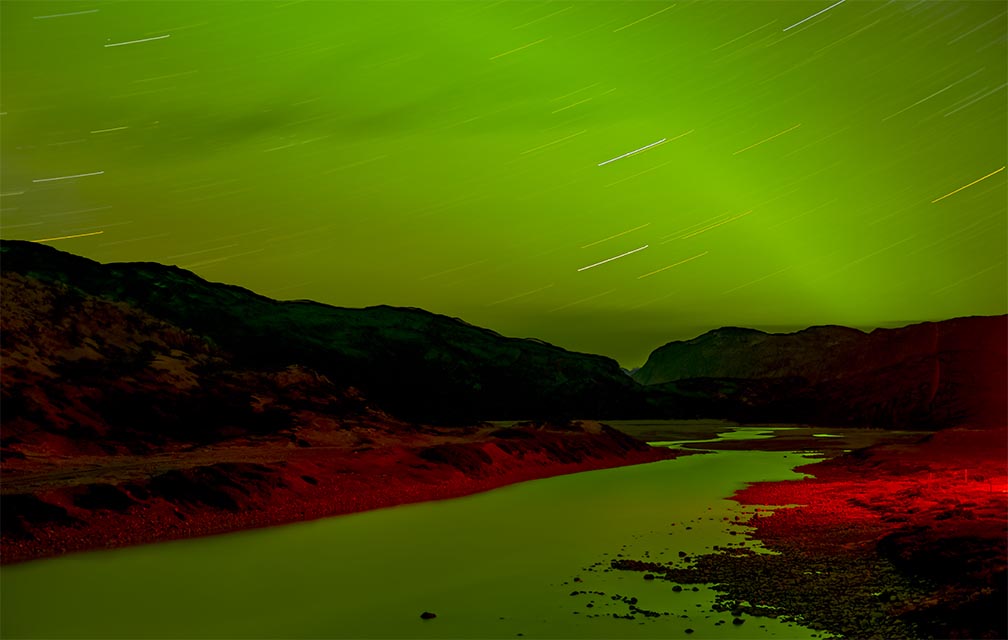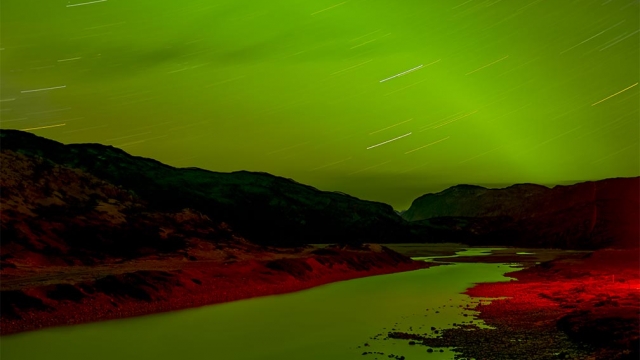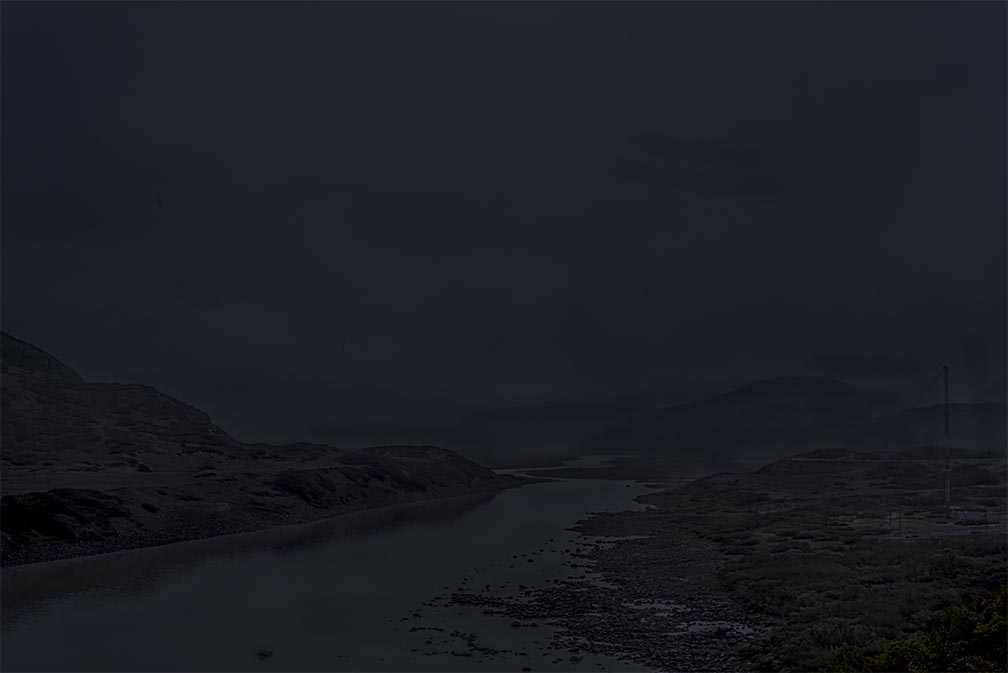I went to Greenland to photograph at night for a month. I was nearly totally alone. My main goal was to get to a glacier at the edge of the ice sheet (Greenland is one of the few places in the world where you could fly to an airport and walk to a glacier).
I looked on the map and estimated it would take about three hours to walk to my destination; instead, it took ten. Stupidly, I didn’t take into consideration a massive 80 degree incline up a six hundred feet mountain which sometimes required ropes to pull yourself up with, no real path, and my lack of experience of any kind–all of which made hiking much slower than anticipated. But since there was little information online or “offline” (i.e., books), I guess I could be forgiven, and carried on.
Narsarsuarq, in south western Greenland, is oddly geographically similar to Manhattan. Except that instead of thirty million people living within the region, there were only about three thousand. There is an international airport in Narsarsuaq with seasonal flights connecting it to Reykiviak, Iceland, a massive metropolis compared to anything in Greenland. In the tiny settlement, I would look out across the fjord to see the even smaller place called Qassiarsuk, population 50, the site of early Norse ruins, and would imagine what pre Pre-Columbian Manhattan might look like. The Hudson river and the Palisades are basically a fjord, after all.
After ten hours of walking, I was overlooking the glacier and the ice sheet that stretches north. Abject fear soon set in, however, as night was coming.
Immediate concerns suddenly switched to:
-
Could I put up my tent (I’ve never done this before).
-
Would I light my butane stove (if I didn’t, I wouldn’t eat; a stove is also something I’ve never used before).
-
If I got sick, would the helicopter find me in time (there is only a nurse in town).
Doing two of the three things, I slept in silence.
Having nothing to do during the day, I would wander as I pleased. This rambling was to scout photo locations that I would return to later at night. Besides this, however, I was unencumbered in nearly every other way. Once I saw someone hiking to the glacier way off in the distance, and waved, but since it was toward the end of the tourist “season”, I didn’t see or hear a living human for another ten days.
Without a routine, I quickly lost track of time and made up my own way of living. Things became very simple: there was just daytime, nighttime, and sleep time. Photographing would be spent at night, and eating was a brief highlight. My sat phone worked only in clear skies allowing me to send a brief daily text: “I am okay”. Overcast days were anxiety-producing because I would be out of touch with the outside world but also meant I would be unable to charge my phone, use my night light, or energize my camera batteries since the solar panel would be useless.
One afternoon, the temperature reached a (relatively) balmy 50s Fahrenheit. I found a small pool of water and decided to strip nude and wade in. This dip was luxurious. As I laid sunning myself on the rocks afterward, I felt feral and ecstatic, completely free from everything. At night under the aurora borealis, I pondered the breeze off the ice sheet where no life existed except microbes buried in the ice that reached two thousand miles north.







Comments are closed.